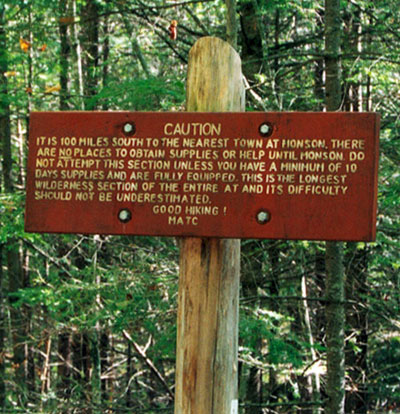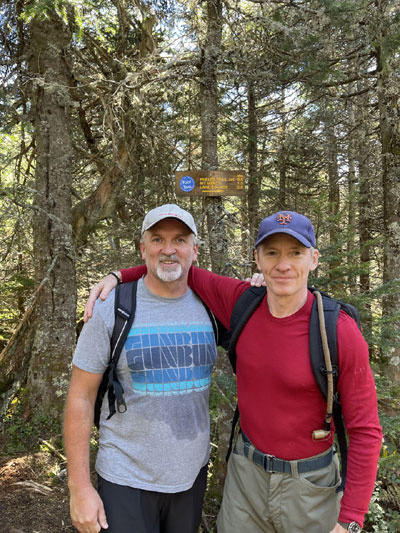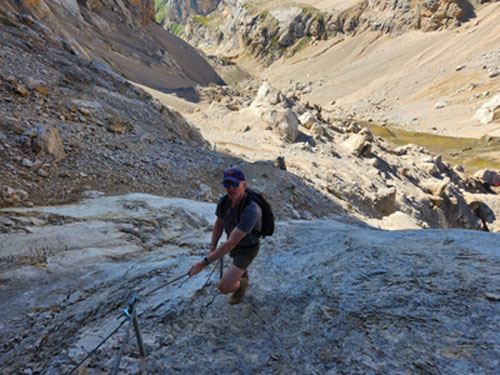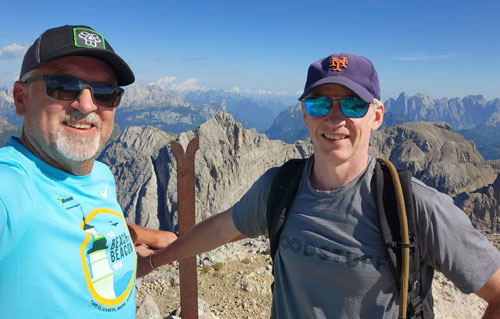|
I have
a
friend
named
Jamie
Wagner.
He
grew
up
in
Maine
and,
after
stints
in
Washington,
D.C.
and
Manhattan,
lives
there
still.
He’s
a
lawyer
by
education;
a
philosopher,
adventurer,
and
oenophile
by
predilection;
and
a
professional
human
being
by
nature.
Hale
and
certainly
hearty,
Jamie’s
the
kind
of
guy
you
want
alongside
you
whether
you’re
at
a
bar
or
in
a
trench
and
definitely
the
man
you’d
want
to
find
you
if
you’re
sprawled
on
the
roadside.
His
law
practice
speaks
volumes:
after
years
of
the
corporate
firm
gig,
he
does
asylum
litigation,
specializing
in
cases
from
Central
Africa,
i.e.
Angola,
Burundi,
the
Democratic
Republic
of
Congo,
and
Rwanda.
The
stories
of
what
his
clients
endured
and
fled
would
make
a
drill
sergeant
cry.
Blending
a
wee
bit
of
the
wine-lover
with
his
introspective
side,
Jamie
has
a
concept
he
calls
“Your
Hundred
Best
Days.”
As
he
explains
it:
The
idea
is
to
sit
down
with
a
glass
of
your
favorite
wine,
a
piece
of
paper
and
a
pen,
and
wander
back
in
your
mind’s
eye
through
your
life
to
identify
your
hundred
best
days—so
far.
As
you
go
through
this
process
you
will
find
out
which
activities
bring
you
the
most
joy
and
you
should
say
to
yourself: I have to do more of that.
I
love
how
it’s
not
just
an
exercise
in
nostalgia;
there’s
that
“so
far”
along
with
the
directive
to
zero
in
on
what
made
those
days
special
and
then
go
have
more
of
them!
I’ve
known
Jamie
for
decades.
He
worked
at
a
New
York
law
firm
with
my
childhood
friend,
Mike,
where
they
started
organizing
quick
excursions
to
Europe
with
a
few
other
colleagues
over
Presidents’
Day
weekends.
I
joined
the
trips
in
2000
when
they
decided
to
go
to
Ireland;
24
years
on,
we
call
our
band
of
brothers
The
Travelers.
Many
of
my
Hundred
Best
Days
have
been
notched
on
those
trips;
no
coincidence,
many
of
those
same
days
make
Jamie’s
list
too.
And
tellingly,
a
lot
of
those
shared
best
days
revolve
around
hikes,
often
all-day
affairs
where
we’ve
reached
the
top
of
a
mountain.
Mountains
are
another
place
you
appreciate
Jamie’s
company.
His
trekking
r茅sum茅
would
impress
Yvon
Chouinard
and
it
keeps
getting
better.
After
law
school
he
took
a
year
to
tramp
around
the
Indian
sub-continent,
not
just
hiking
but
mountain-biking
the
Himalayas,
often
lugging
his
wheels
when
riding
them
proved
impossible.
While
there,
he
climbed
Stok
Kangri,
at
20,187’
the
tallest
mountain
in
the
Stok
Range.
He
scaled
Point
Lenana
on
Mount
Kenya,
Africa’s
second-highest
mountain.
In
his
home
state
he’s
tackled
Mount
Katahdin,
a
challenging
peak
not
for
those
with
faint
hearts
or
fear
of
heights.
This
past
October,
he
and
a
friend
completed
Maine’s
Hundred-Mile
Wilderness—the
Appalachian
Trail’s
most
difficult
section
and
a
stretch
without
chance
of
re-supply—in
nine
days.

There’s something about a mountain as a singular destination, the clarity of
the goal, the poetry of the endeavor; the North or South Pole is some
nebulous set of coordinates where a bunch of invisible, imaginary lines
intersect, but a mountaintop, whether it’s Annapurna or Old Rag, almost
always produces a palpable sense of achievement. You don’t need a
compass or GPS to verify what your senses alone can confirm.
Over the years, some of our shared Hundred Best Days have included
trekking to the top of Mont Ventoux, the solitary, barren-domed giant
known as “the Beast of Provence” first scaled by the poet Petrarch and an
infamous stage of many a Tour de France. During the Covid era with travel
to Europe proscribed, Jamie, Mike and I journeyed to the Adirondacks. We
drove straight to the Mt. Marcy trailhead, pitched our tents, cooked our
grub, and drank a fair amount of superlative Bordeaux. But next morning
we rose at dawn for a 9-hour odyssey up and down New York’s tallest
mountain, a day that easily makes all our lists.

This past August, the Travelers returned to Europe in force—our band
numbered six—for a bravura tour of the Dolomites in Italy. If you’re not
familiar with this region, the Dolomites dazzle; any direction you look, the
vistas will amaze you with jagged peaks and John Ford skies extending as
far as vision allows. We stayed at the Hotel Garni Roberta at the eastern
base of Marmolada, the Queen of the Dolomites at 10,968’. We couldn’t
have picked better digs for both fare or location.
In what we regard as the greatest hike of all The Travelers’ trips—so far,
our crew tackled Passo and Cima Ombretta, starting from the front door of
our hotel and walking down the road to the trailhead. Cima Ombretta is a
9,879’ peak connected to Marmolada by a pass, or saddle; Passo Ombretta
sits at a tidy 8,858’.
We were out nearly 12 hours, with stops for a round of espressos at the
rustic Rifugio Malga Ombretta; al fresco lunch at Rifugio Falier; a round of
beers at the same venue many hours later on our way back down; and then
a supremely well-earned dinner at the Agriturismo still a half-hour’s walk
from our lodgings.
After a breathtaking effort in both the aesthetic and physiological senses of
the word, our merry band reached the Passo Ombretta. I popped the cork
on a bottle of Valpolicella I’d been carrying the last five hours alongside
three liters of that other stuff called water and we took celebratory swigs.
Hiking signs in the Dolomites indicate time, not distance. When we
reached Passo Ombretta, the sign for the the peak said one hour, which
meant an additional hour to return to that same spot. There was no way I
was going to hike that far with the August sun still high in the sky and not
bag that peak. I didn’t even have to ask; Jamie felt the same way. Our
compatriots elected to begin the long return journey. We hoped to catch up
with them at far-off Rifugio Falier, where we’d lunched and where they
would undoubtedly stop for well-earned beers.
Jamie and I made it to the top in 55 minutes. The last push proved quite
challenging. A seemingly endless slope of silty gravel around 9,500’ had us
heaving for air with its two-steps forward, one-step backwards progress.
We negotiated a particularly steep pitch of bare rock on via ferrata, a fixed
installation of steel cable, which, in this case, we used to hoist ourselves up
hand-over-hand. On the home-strtech, we carefully leaned our left
shoulders into the mountain holding onto another fixed cable for security
as we locked our eyes on the foot or so of ledge that hugged the last hump
before the knife-edge path to the pinnacle.

And then we could see the prize.
The Ombretta summit was glorious! Only the sheer southern wall of nearby
Marmolada broke up a total top-of-the-world panorama. As on many such
European summits, a large rusty cross defiles that spare sliver of aerial
property. I poured out the remaining splash of Valpolicella as an offering to
my far more palpable god. Jamie and I shook hands and, among many
happy sentiments exchanged, agreed that there was no place we’d rather
be. I also repeated Edmund Hillary’s wonderful line: “Well, we knocked
the bastard off.”

We made it back down to Passo Ombretta in 45 minutes. Along with an
overall assist from gravity, we glissaded—a kind of skiing in one’s boots on
soft gravel or sand—down many of the stretches that were murder going
up. We joyfully employed the technique again down several long inclines
on which we’d labored going up to the pass. We made serious time.
By now the sun was also beginning its descent and our shadows grew
longer. Among many rewards for our summit push, we spied a few ibex
grazing. After several more hours of rugged downhill tramping, we noted
the lusher vegetation and then the telltale aroma of woodsmoke: Rifugio
Falier. Our friends and cold beers awaited us, as did more hours of hiking
before one of the tastiest, most jubilant dinners we’ve ever enjoyed. And
after yet one more (sobering) gambol with headlamps, we finally returned
to our hotel.
In Jack Keruoac’s lovely (and I would argue best) book, The Dharma
Bums, Japhy Ryder, the wine-drinking poet and college professor based on
Gary Snyder, and protagonist Ray Smith, stand-in for Kerouac, climb
Matterhorn Peak in California’s Sierra Nevada. Ryder relates a Zen parable
to Smith about their endeavor which has always stuck with me: “When you
get to the top of the mountain keep climbing.” That’s Jamie Wagner’s
“Hundred Best Days” concept compressed—into a diamond.
|